Case of the Missing Truss Rods - Revisited
12













12
Re: Case of the Missing Truss Rods - Revisited
|
This post was updated on .
Here are some 27' boxcars…. and an underside shot to boot! Note the end doors on the brake staff end of the car. Another common spotting feature?
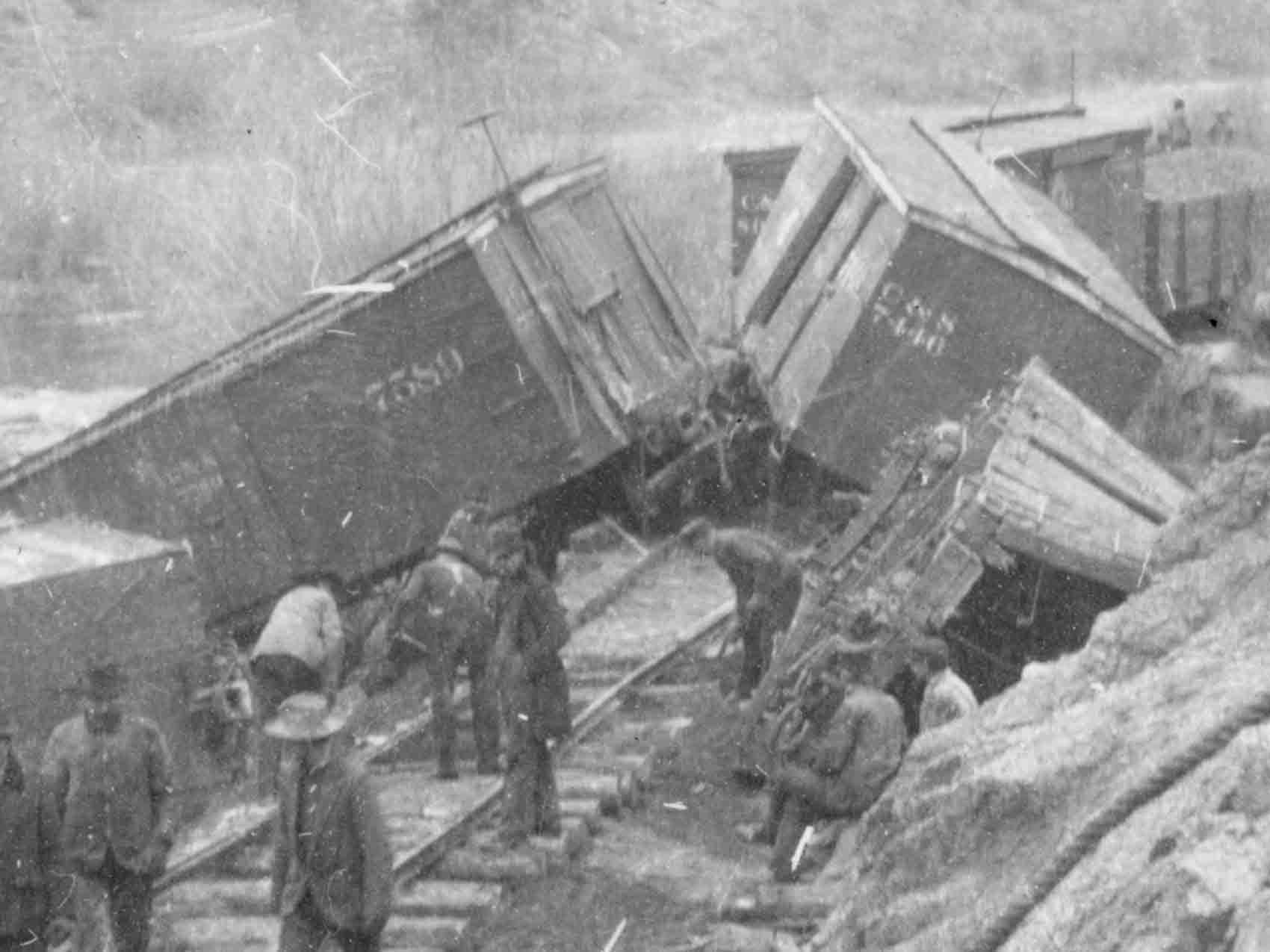 Riverview Wreck 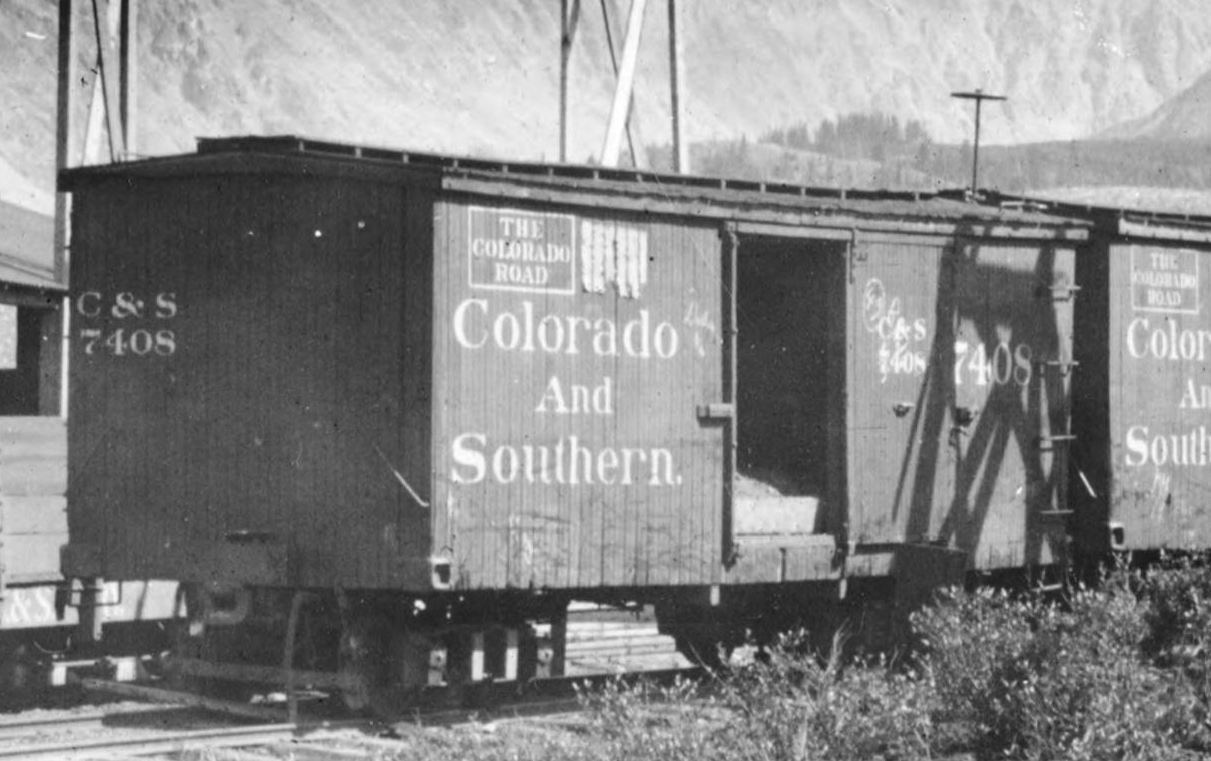 Kokomo Walsh Smelter Doug
Doug Heitkamp
Centennial, CO |
Re: Case of the Missing Truss Rods - Revisited
|
Note the end doors on the brake staff end of the car. Another common spotting feature?
I duuno, Doug. I was just rereading Ron Rudnick"s plan book. He said all the UP built cars for the South Park came without end doors on either end. But the 27 foot UP built Kansas Central cars, acquired by the DL&G and UPD&G did have end doors: 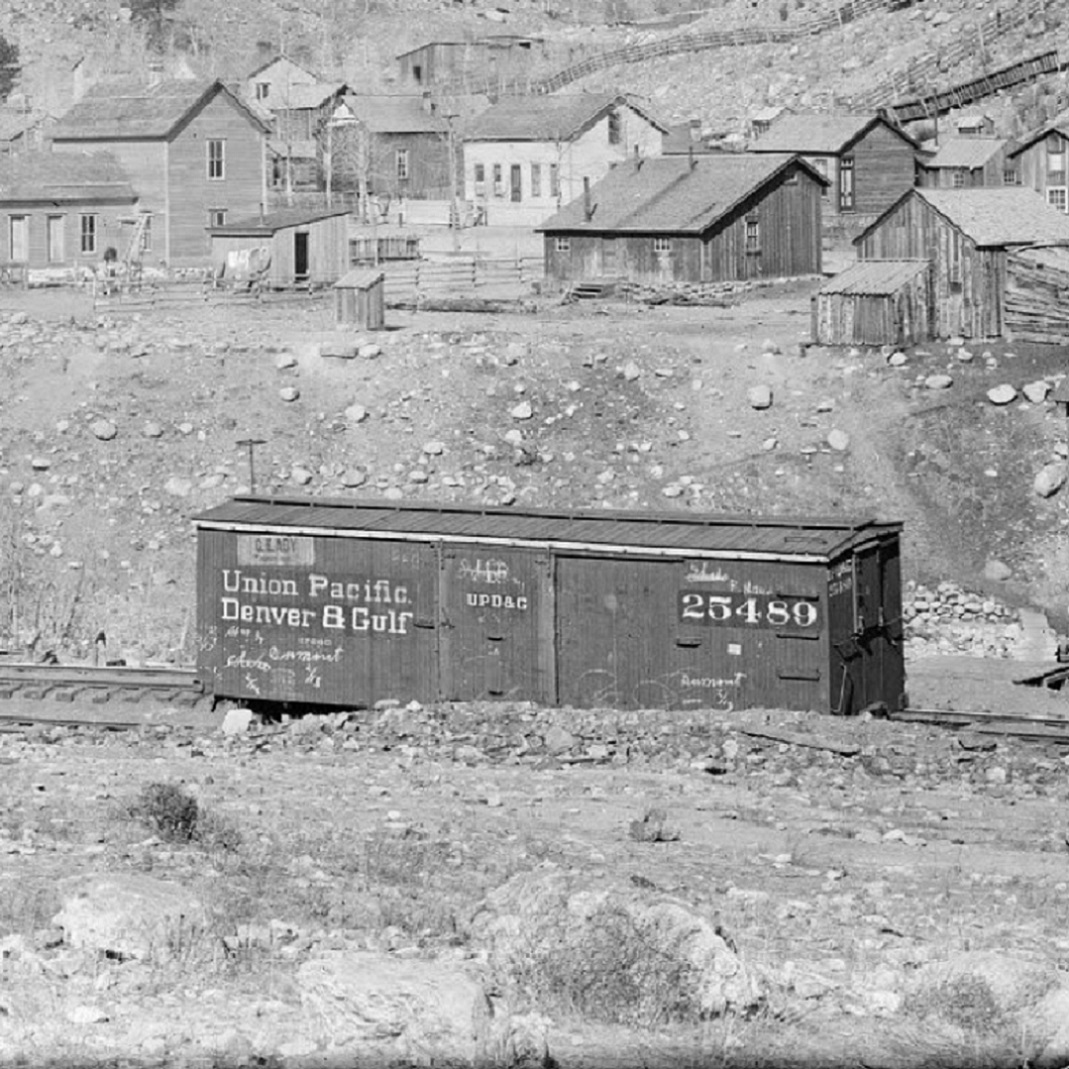 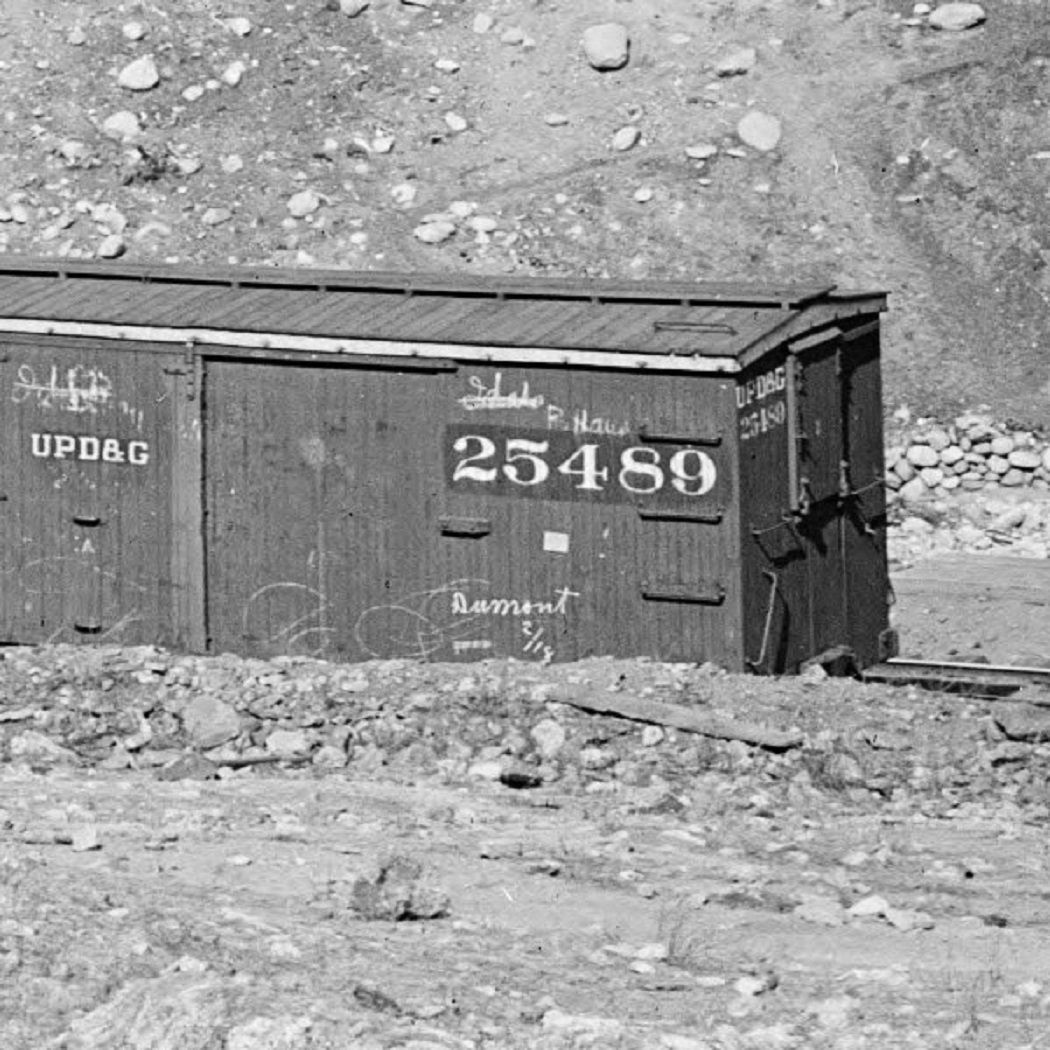 But this one has a door on the "A" end. But by the time the South Park cars were handed down to the new C&S, end doors could have been added willie-nillie I suppose. The visible frame of the car at the Riverview wreck is consistent--no truss rods. BTW, I seem to recall a couple of reefers wrecked at Riverview as well, prior to loosing their UP paint, like the cars a year earlier at the Washington Spur wreck. Do you know of any clear image of those? I seem to recal Derrell writing that one was a 26' car and the other a 27' car.
Jim Courtney
Poulsbo, WA |
Re: Case of the Missing Truss Rods - Revisited
|
Yeah, I guess that was a stretch on the end doors. Back to looking for more pictures of no truss rods…..
Doug
Doug Heitkamp
Centennial, CO |
Re: Case of the Missing Truss Rods - Revisited
|
Keep up the search!
BTW, did you notice in the photo at Walsh Smelter, the two 27' boxcars look a tad different? 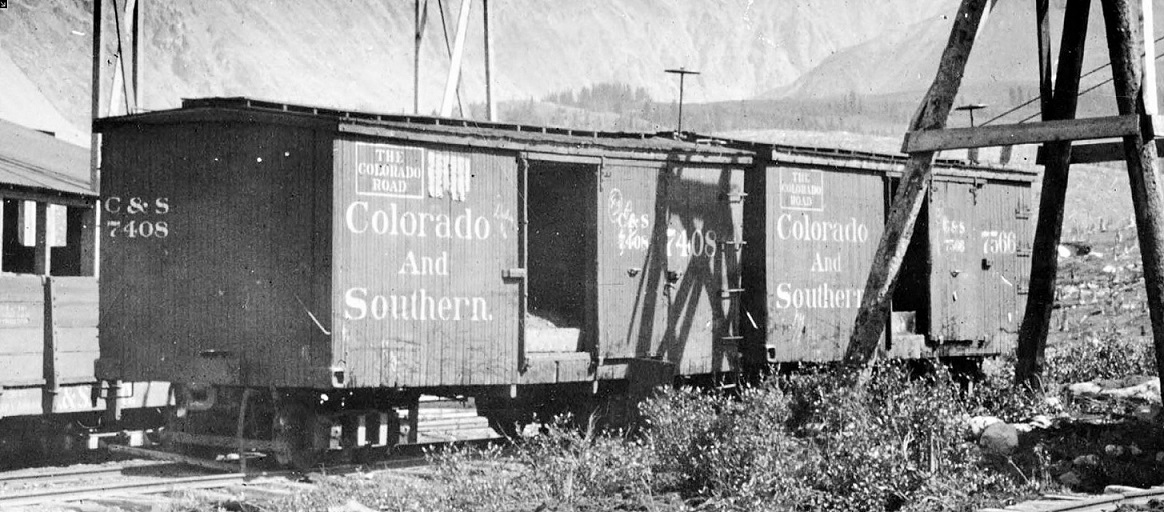 Boxcar 7566 seems to sit higher on its trucks than 7408, and the side fascia board seems thicker. Makes you wonder if one is a South Park car and the other is a Kansas Central car. Or maybe the're both South Park cars, built in different orders. Perhaps not all UP built 27 foot cars were created equal. But it's pretty obvious that 7408 has no visible truss rods crossing needle beams. And the diagonal end grabs look symmetric in their placement on this car, so perhaps quality of shop work also varied.
Jim Courtney
Poulsbo, WA |
Re: Case of the Missing Truss Rods - Revisited
|
In reply to this post by Doug Heitkamp
I forgot about this one in The Pictorial Supplement . . .
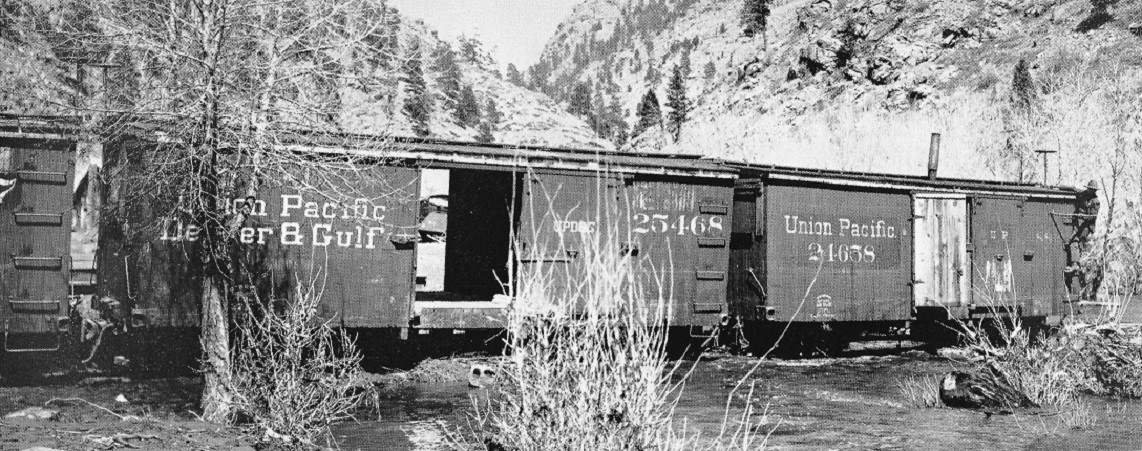 Denver Board of Water Commissioner's Collection Despite the markings, these are C&S 27-foot boxcars, the date is May 6, 1900, at South Platte, following the May 3rd flood caused by the collapse of the Goose Creek Dam. UPD&G 25468 has got to be a Kansas Central refugee, while DL&G 24658 is likely a South Park car. The UPD&G car, again, looks different, than its cousin, the fascia looks wider to me. The car on the left has a door on the "B" end this time, while the DL&G car has some kind of door on the "A" end. Can't tell about truss rods. The position of the number 7 on the car out of frame to the left, suggests it's probably lettered UPD&G as well.
Jim Courtney
Poulsbo, WA |
Re: Case of the Missing Truss Rods - Revisited
|
This post was updated on .
In reply to this post by Doug Heitkamp
I've been reading an excellent book called The American Railroad Freight Car, by John H White, Jr., and I've come across what I think is the explanation for the 27' boxcars with needle beams but no truss rods. In boxcars, the side framing with its vertical and diagonal elements forms a truss, so that the car body is like a bridge, resisting sag. It was typical to use iron rods in the tension elements of those side frame trusses. In particular, there was often a vertical rod on either side of the door, tying the top of the side truss to the side sill, reinforcing the wooden vertical elements there. Those rods went through the side sill and on down through the needle beams, fastened with nuts on the bottom of the needle beams. So, the function of the needle beams was to transfer the load from the floor of the car transversely to the body side trusses that provided the stiffness against sagging.
On p. 219 of the book it says that for the body side frame trusses "…notably for cars bereft of truss rods, the Pratt truss was favored." For these relatively short and lightly loaded cars this construction was apparently quite satisfactory- none of the photos I've seen of these cars shows much sagging, and they gave good service for quite a number of years. It appears that as standard gauge cars grew in length and loading, by 1875 or so the usual truss rods under the needle beams became common. But I guess our 27' narrow gauge cars just didn't need them. When the 30', 25 ton cars came along later, truss rods became the norm. Do you think this makes sense? Comments welcome. I thank you all greatly for this thread. I've come to really like these little old cars, and in fact I think this is my favorite of the C&S boxcars. Hope you'll indulge my posting a photo of the truss rod-less 27' car I've been putting together now and then for the past couple of months. It's intended to be near the end of its life on the C&S. I decided to make it #7529, the car whose end view is prominent in the photos Doug started this thread with. Here's my 7529: 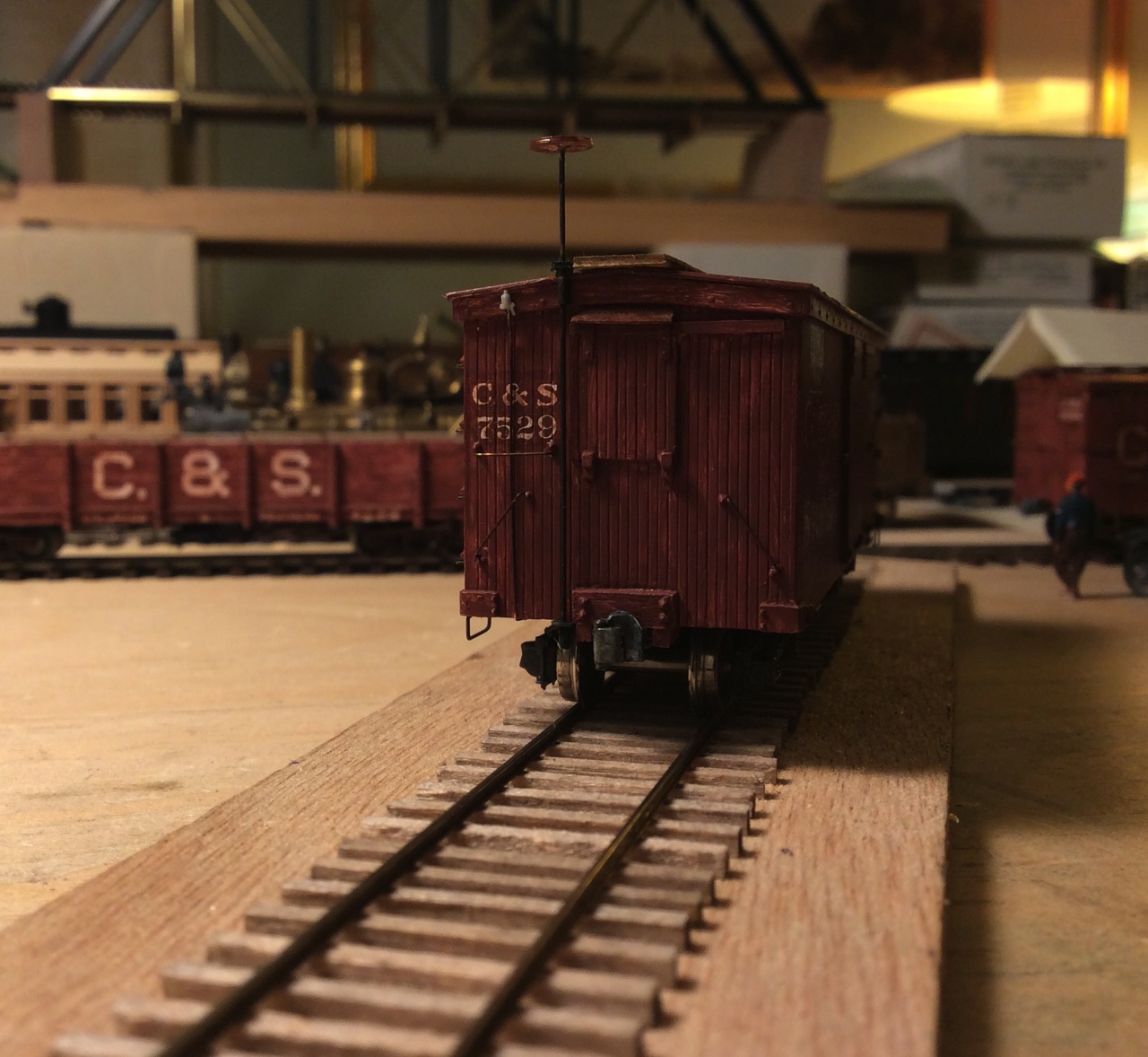 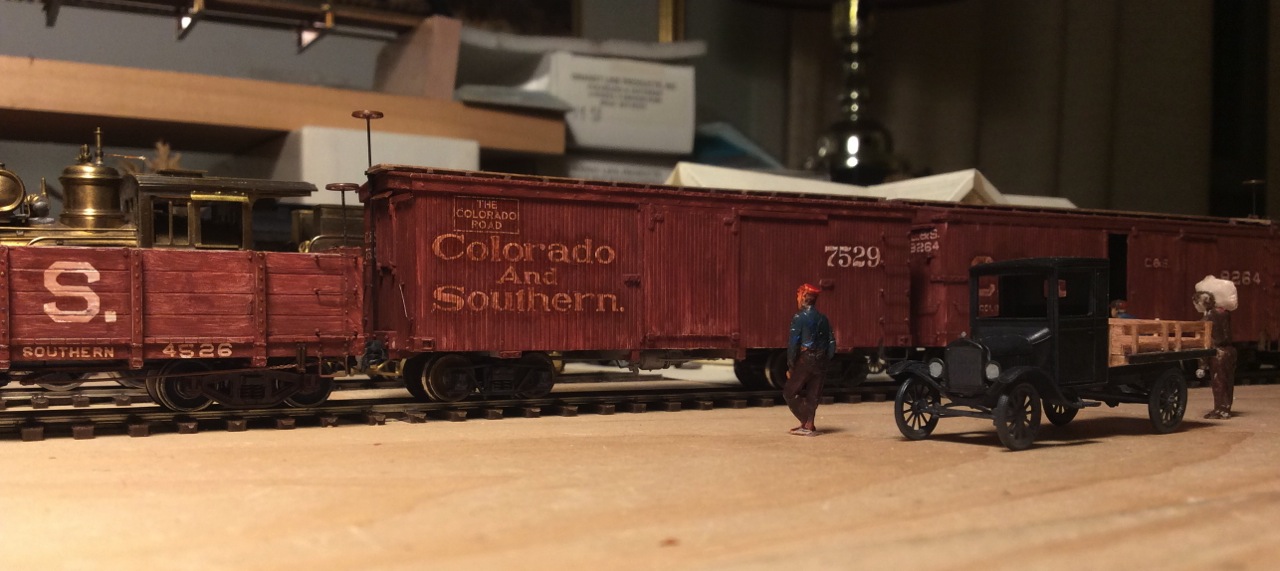
As usual with my models, it still needs some details. Also I don't have correct trucks, so I put St. Charles trucks under it for now. Cheers, John
John Greenly
Lansing, NY |
Re: Case of the Missing Truss Rods - Revisited
|
Also I don't have correct trucks, so I put St. Charles trucks under it for now.
Beautiful model of one of my favorite C&S car classes, John!  The correct trucks for the 27 foot cars is the UP 14 ton truck, what Doug Heitkamp refers to as the "type C" truck. In Sn3, I'm using Eric Bracher's Rio Grande Models Carter Brother's 4-foot wheel base trucks, with the outside brake hangers clipped off, as the closest approximation. Eric offers the same trucks in HOn3, part number 3211, for $6.00 per pair: 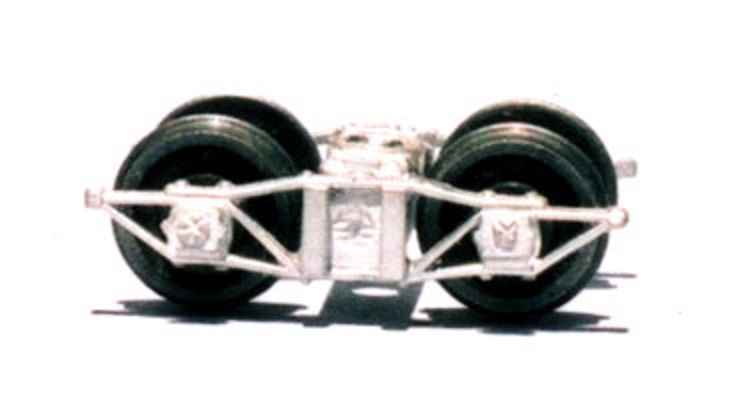 http://www.riograndemodels.com/HO.htm I believe that Precision Scale still offers HOn3 outside brake beams in plastic, that could be added to complete the modification. I believe that this is about as close to this as you can get: 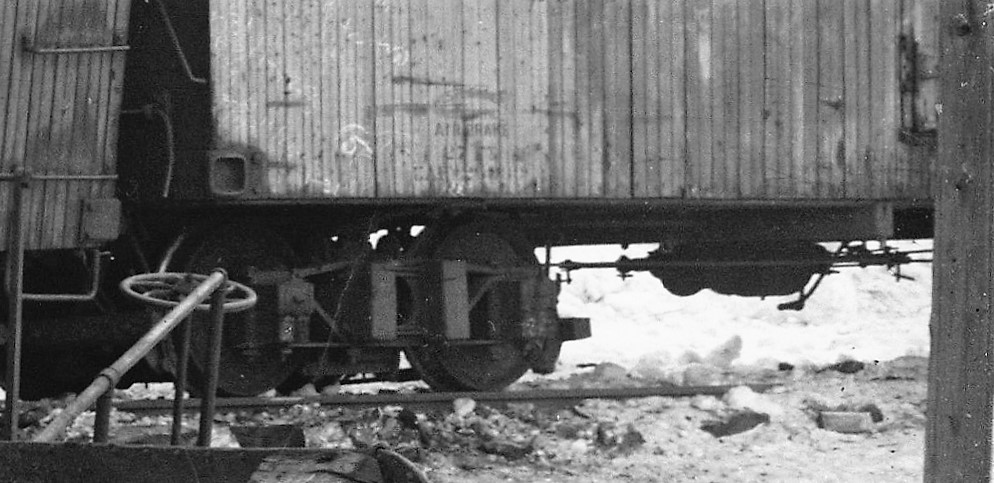
Jim Courtney
Poulsbo, WA |
Re: Case of the Missing Truss Rods - Revisited
|
Notice the difference in siding size toward the end of the car.I noticed this on 608 when it was stored at the Como Roundhouse.
|
Re: Case of the Missing Truss Rods - Revisited
|
In reply to this post by Jim Courtney
Jim, thanks!
I was thinking the Rio Grande Models trucks might be the best thing, I'll get some! By the way, I used your thread on kitbashing the UP-built 27' boxcar as a reference in building mine, thank you for all the excellent information and inspiration there. Have you had a chance to finish up that car? I'd like to see some more pictures. John Lansing, NY
John Greenly
Lansing, NY |
Re: Case of the Missing Truss Rods - Revisited
|
In reply to this post by Robert McFarland
The two cars at St. Elmo also have a mixture of 3 1/4" and 5 1/4" siding.
Ken Martin "Notice the difference in siding size toward the end of the car.I noticed this on 608 when it was stored at the Como Roundhouse." |
Re: Case of the Missing Truss Rods - Revisited
|
In reply to this post by John Greenly
Have you had a chance to finish up that car? I'd like to see some more pictures.
Nope, I'm back to working full time as a NICU doc. My financial advisor says this retirement thing looks pretty iffy to him. So, no time for model building recently . . . perhaps I'll finish it before I die. 
Jim Courtney
Poulsbo, WA |
Re: Case of the Missing Truss Rods - Revisited
|
In reply to this post by Jim Courtney
I read this thread with passing interest six (WOW!) years ago. The discussion relates to an era well before that which I model.
Now that I seem to be modelling a couple of the 27' cars that survived to the 30s in Water Service, it is more of interest. I have studied the photos and am struck that there are both needle beams on the cars, and a remarkable lack of bolts/truss rods on the end of the car. As Todd observed, why would there be needle beams if not queen posts: the two parts go together like bacon and eggs. There is no other reason for a needle beam, except to frustrate modelers who have the wrong one in the wrong place and the brake rod holes no longer line up. I infer that these house cars are constructed similarly to other house cars, with multiple sills tenoned into end beams and the sides forming a truss above. The whole works is generally held in compression by rods that run through the car. So, if there are not queen posts, I would expect a couple rods running the length of the car, but there is no evidence of a bolt outside the siding. I can make up a story that the washer, nut and threaded end are nicely concealed under the siding, but this seems unlikely and hard to repair. I am left to ask: what holds the car together? I suppose that the truss rods terminate at the bolster, but this seems strange too. Or...could the truss rods run through the needlebeams and terminate at the bolsters? Neither of these options solve the question about how the car is held together, though.... So the mystery remains.
Keith Hayes
Leadville in Sn3 |
Re: Case of the Missing Truss Rods - Revisited
|
Hey Keith,
Yep, best I can tell, none of the 27 foot UP boxcars, nor the 27 foot Tiffany reefers had truss rods, thought needle beams are obviously present. 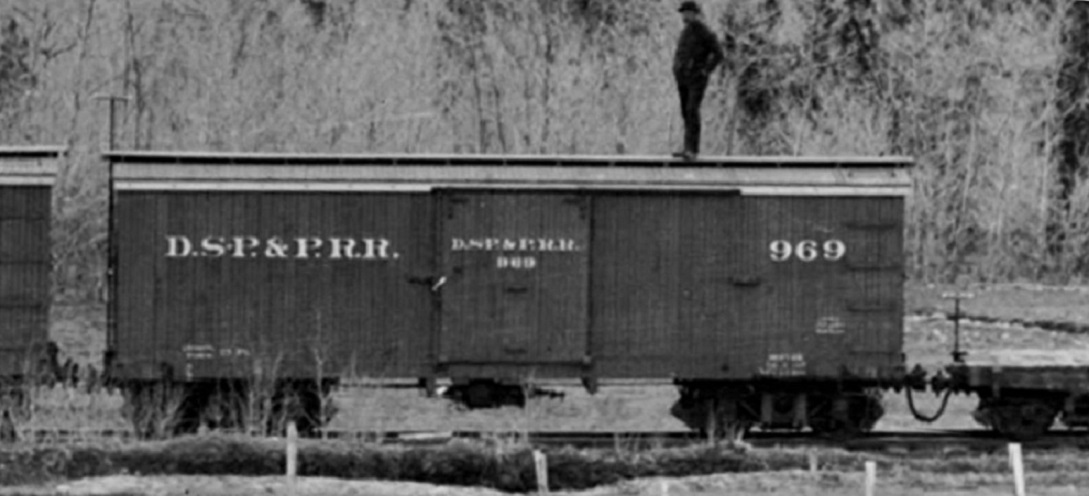 My take is that there were two longitudinal tension rods, that ran the length of the car, up near the sides of the two center sills. The bolt heads for those rods are on the coupler buffer block: 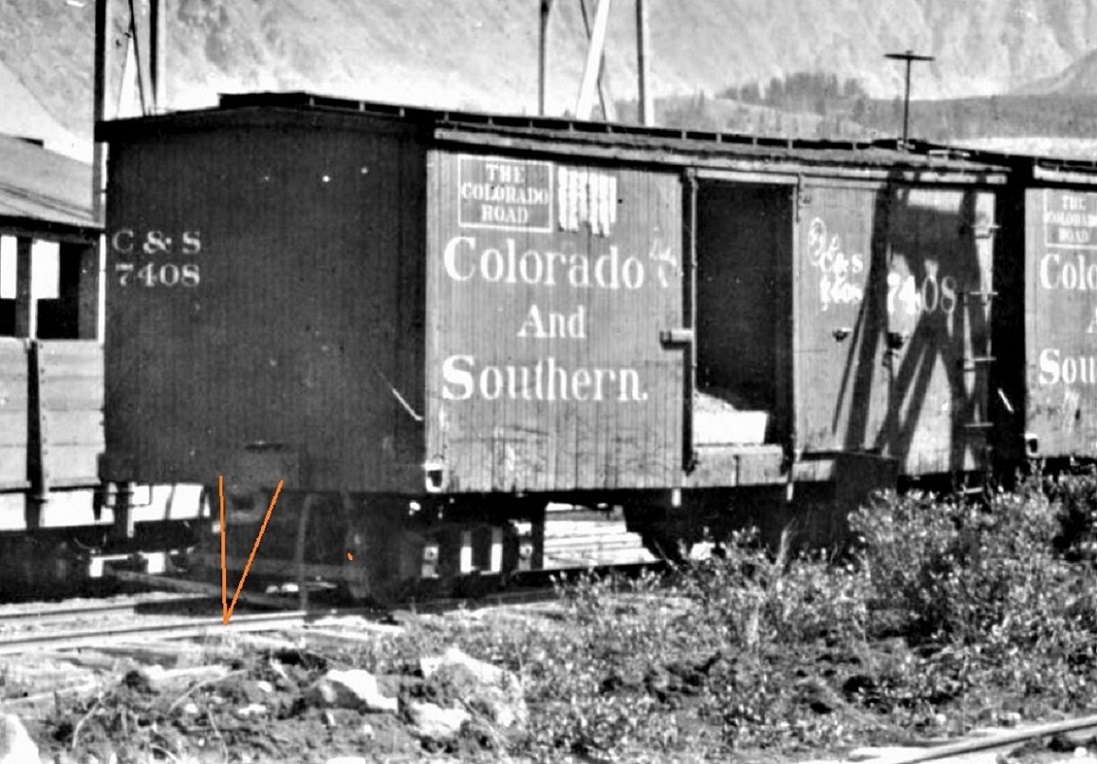 So why the needle beams? The only purpose that I can see is that when the car is being pushed, it keeps the frame and the car body from bulging laterally outward in the center. So, if you see an outfit car with needle beams, queen posts and truss rods, it is likely a 26 foot Litchfield conversion, or a 30 foot Peninsular conversion. It may be possible that a few 27 foot outfit cars were rebuilt with heavier frames, including queen posts and truss rods--but these guys certainly weren't: 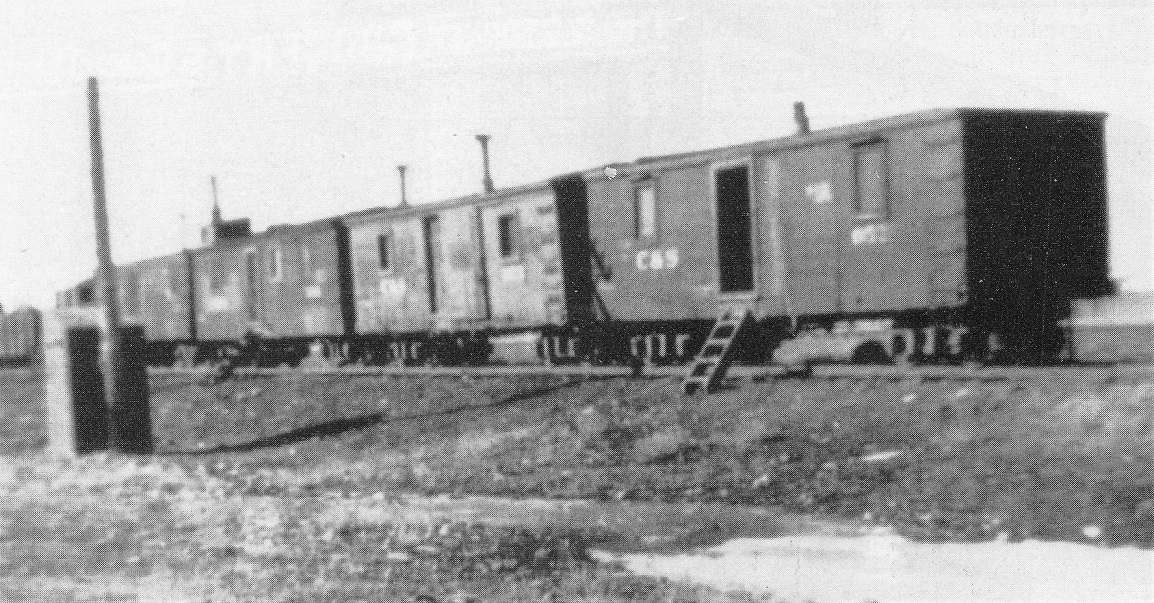  All have type-C trucks with not a truss rod in sight. BTW, building period models from kits often requires some creative hole-filling. If you need to fill the holes for the truss rod bolts (that weren't) on Bill Meredith's laser wood boxcar kit, I've used Plastic Wood (a small tube from the hardware store) thinned with lacquer thinner to the consistency of a thin pancake batter, to then push into the holes. When dry, sand it smooth with the surface, add any grove needed with a micro razor saw: 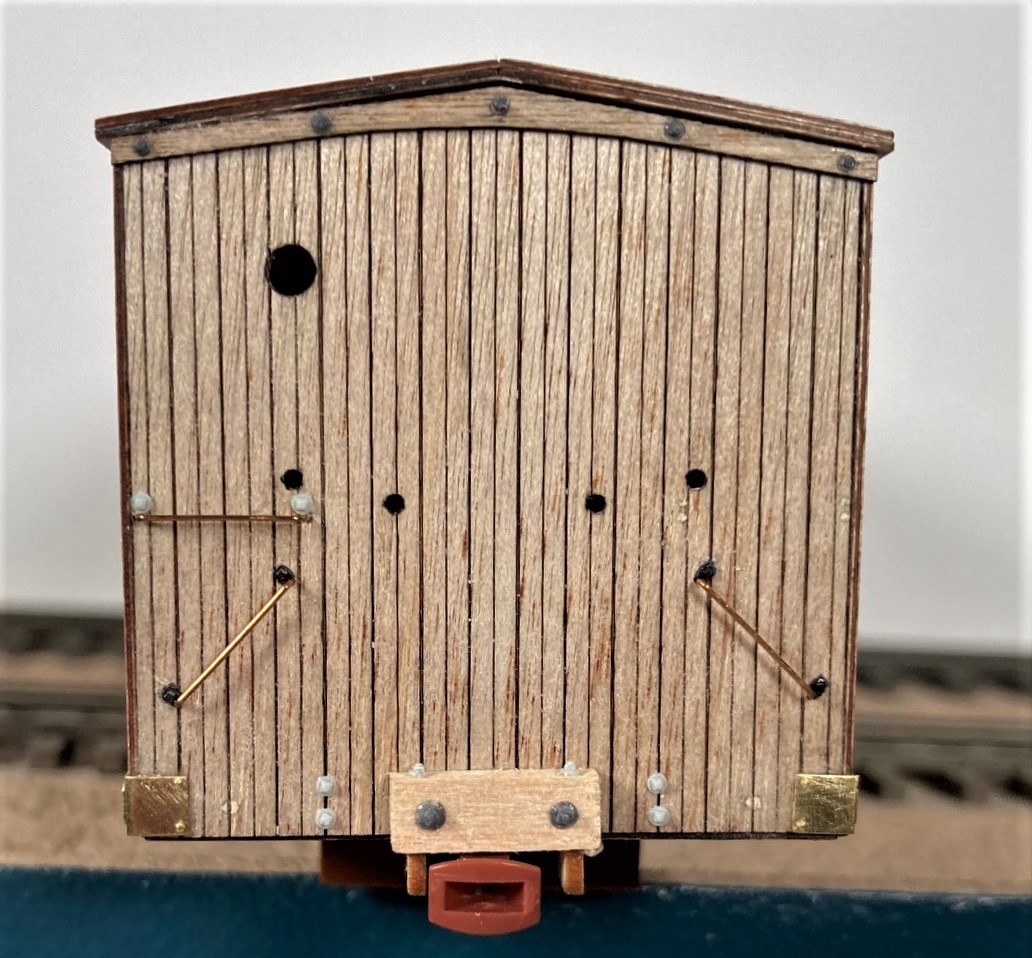 Tiffany reefer kit, under construction. Works even better to fill holes for grab irons on wood kits . . .
Jim Courtney
Poulsbo, WA |
«
Return to C&Sng Discussion Forum
|
1 view|%1 views
| Free forum by Nabble | Edit this page |

